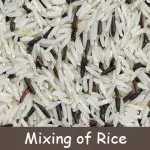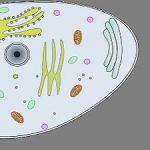Both the amphibians and reptiles belong to the phylum chordate, thereby having well defined vertebral columns. But still, they greatly differ in their living habits, structure, reproduction cycle and even habitat. The class amphibians comprise the animals like toads, frogs, and salamanders. They can survive easily on land and water as they have optional gills or porous skin … [Read more...] about Difference Between Amphibians and Reptiles
Difference Between Physical and Chemical Change
Any matter can undergo two types of changes: Physical or Chemical changes. The physical changes are those actions that generate no new substance. Instead, the older substance only changes in its size, structure and sometimes texture. Whereas the chemical changes give rise to a very new substance. And the older one loses all its characteristic properties. The physical changes … [Read more...] about Difference Between Physical and Chemical Change
Difference Between Dementia and Alzheimer’s
Alzheimer's disease is one of the common types of the Dementia. Dementia is a syndrome that describes the brain disorders and makes the person hard to remember, the decline in the decision-making ability, communication ability, losing emotional control, repetitious questioning. On the other hand, Alzheimer's is a disease which affects thoughts, memory, communication skills, and … [Read more...] about Difference Between Dementia and Alzheimer’s
Difference Between Cytoplasm and Protoplasm
Presence or absence of the nucleus is the main difference between cell's cytoplasm and protoplasm. As cytoplasm does not have the nucleus, which is present in the protoplasm. Even the cytoplasm consists of the organelles like mitochondria, Golgi body, endoplasmic reticulum, etc., on the other hand, protoplasm consists of the cytoplasm, nucleus, and the plasma … [Read more...] about Difference Between Cytoplasm and Protoplasm
Difference Between Simple and Compound Leaves
Leaves perform crucial functions like photosynthesis, storing food and water etc. But they can vary in their shapes, sizes, colours, arrangements, and patterns based on different environmental conditions. On the basis of these differences, we can broadly classify the leaves as-Simple and Compound. The simple leaves are the one which bears a single leaf blade or lamina that … [Read more...] about Difference Between Simple and Compound Leaves





